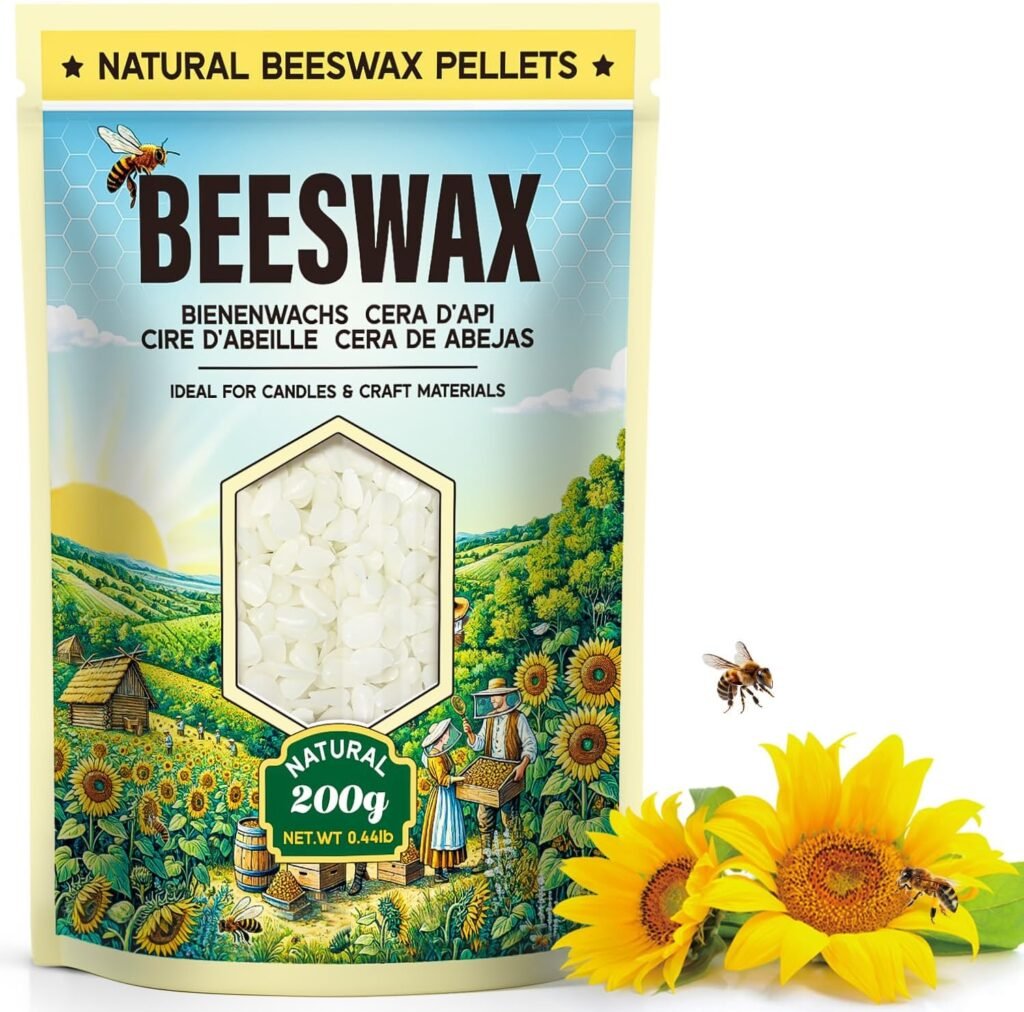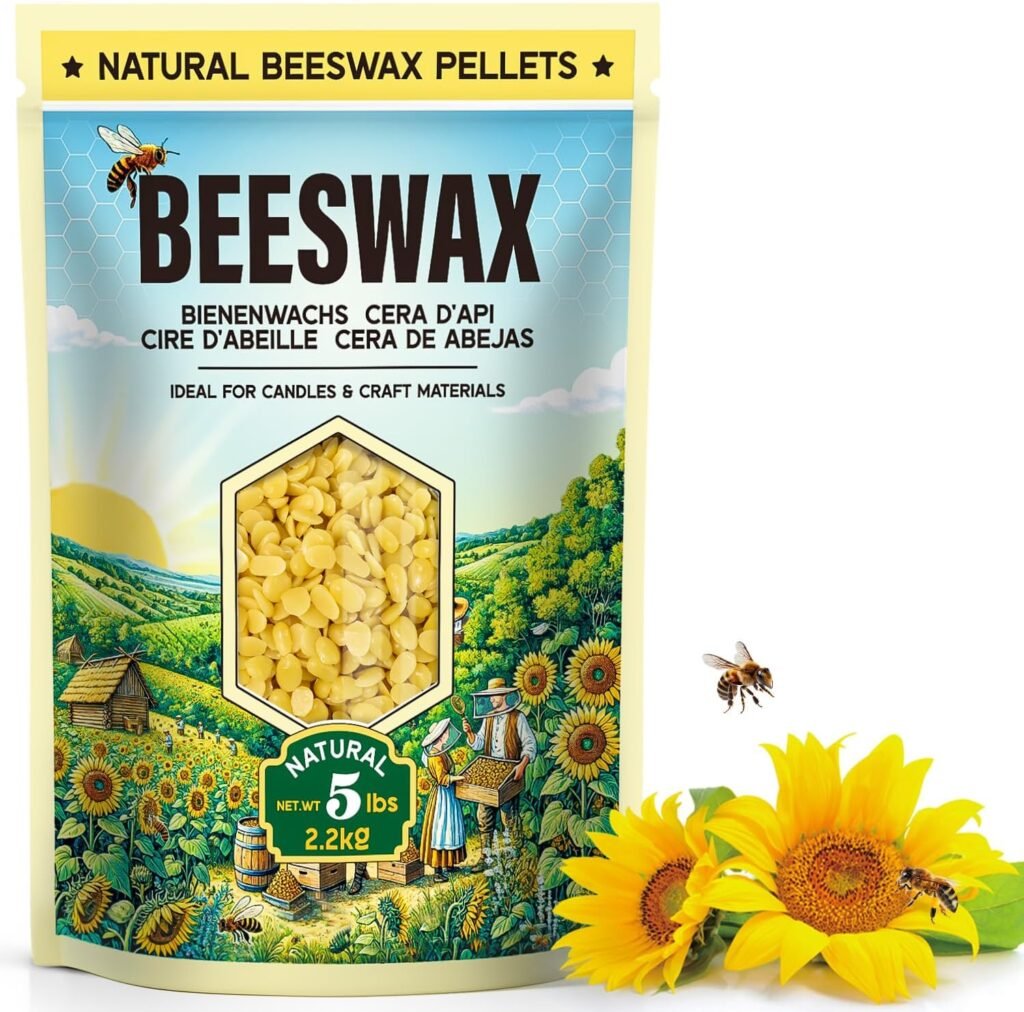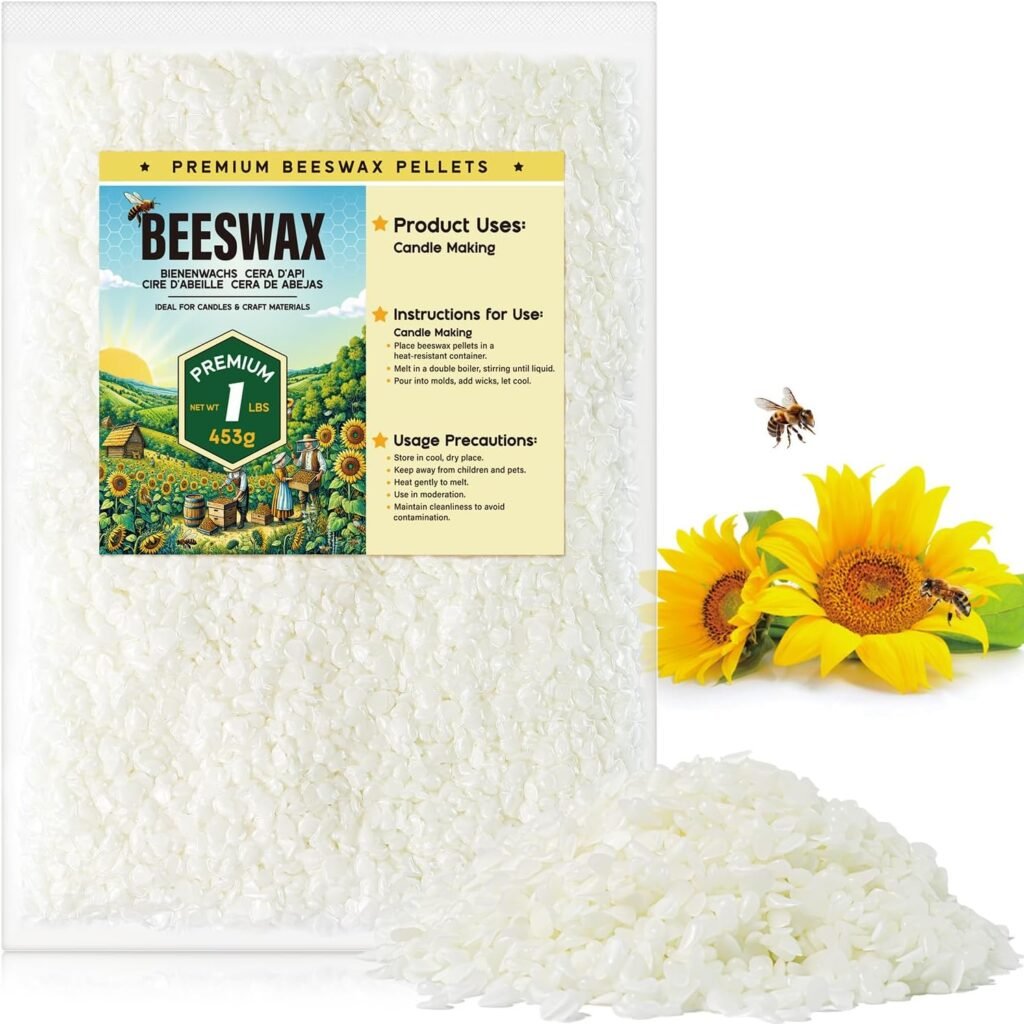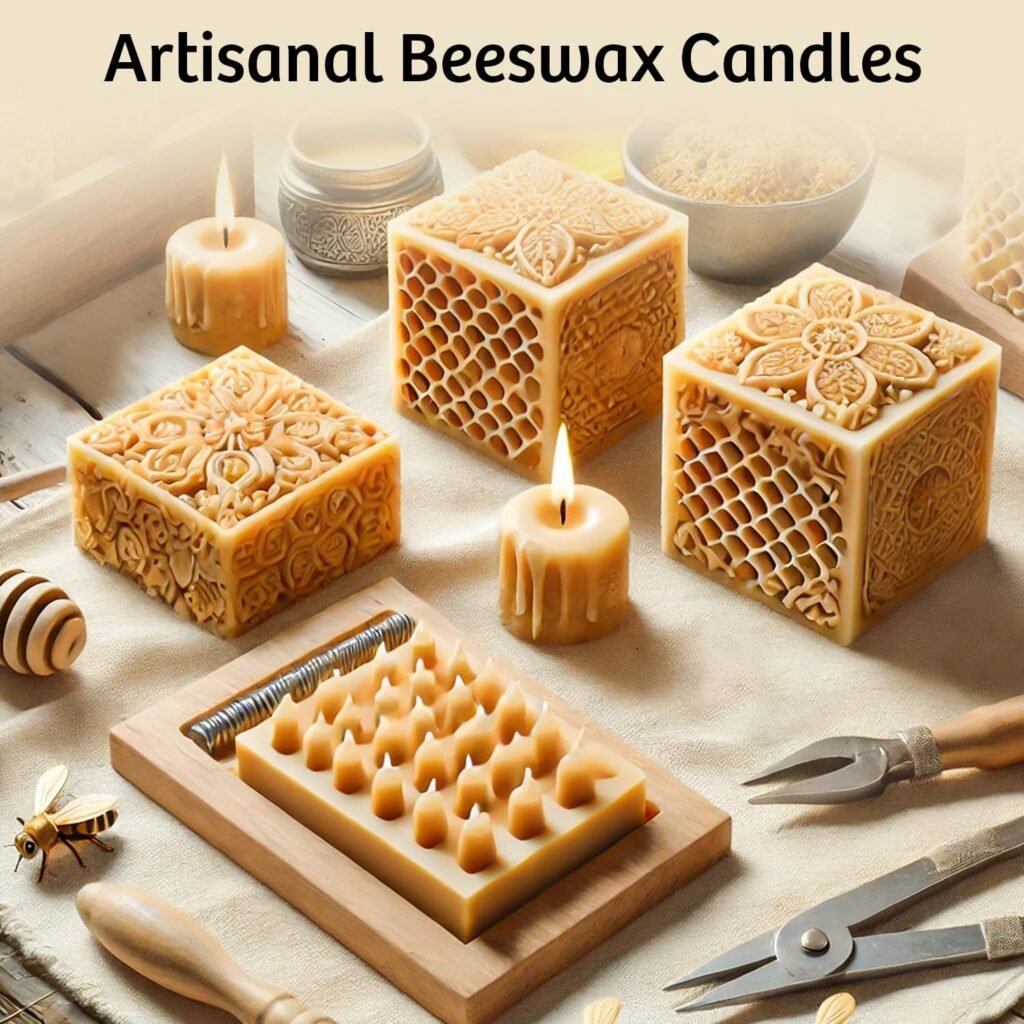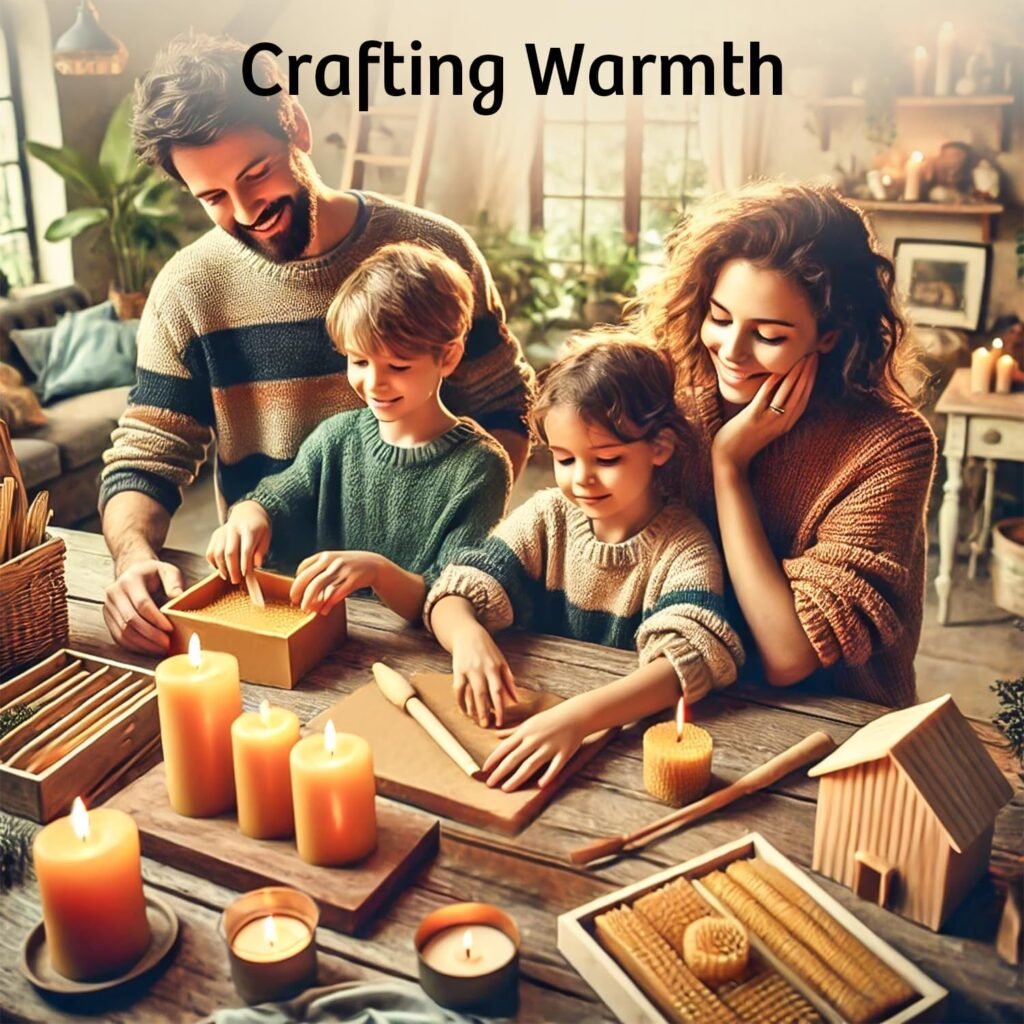Are you wondering whether the “Beeswax Pellets for Candle Making – 5lb/10lb/20lb – Natural Beeswax for Candles, Lip Balms, and Skincare – White Beeswax for DIY Projects – Ideal for Beginners and Experts(5lb)” is the right choice for your next craft project?
Product Overview
This product is marketed as natural white beeswax pellets available in 5lb, 10lb, and 20lb sizes, and it’s intended for candle making, lip balms, and general skincare projects. The pellets are sourced from quality farms and are presented as suitable for both beginners and seasoned crafters.
Beeswax pellets are popular because they melt evenly and are easy to measure, making them convenient for both small batches and larger production runs. The white beeswax form typically indicates that the wax has been filtered or lightly processed to achieve a lighter color while preserving much of the beeswax’s beneficial properties.
Key Features
This section summarizes the standout features you’ll likely care about when choosing beeswax for DIY projects and retail-quality goods. You’ll see why the manufacturer emphasizes purity, versatility, and ease of use.
- Premium material sourced from selected farms to maintain consistent quality.
- Presented as ideal for candle crafting, emitting a pure fragrance on burning.
- Multiple melting methods supported including microwave, double boiler, and candle melting pots.
- Versatile use beyond candles: balms, skincare formulations, and polishers.
- Suitable for beginners and experts with straightforward handling characteristics.
Material and Sourcing
The listing indicates that the beeswax comes from carefully selected farms, which suggests a level of quality control and traceability. Sourcing from reputable farms usually means the wax is less likely to contain contaminants or excessive impurities.
When evaluating beeswax, you want to know whether it’s raw, filtered, or bleached and how the processing might affect scent and properties. White beeswax is typically filtered and possibly lightly processed, which reduces the natural yellow tint while keeping the wax’s performance for applications like candles and skincare.
Purity and Additives
You’ll want to confirm whether the pellets are pure beeswax or mixed with additives, but the product description emphasizes premium, natural beeswax. Pure beeswax has predictable melting behavior and is favored for skin-safe applications; additives can change hardness, melting point, and skin compatibility.
If you need cosmetic-grade wax for lip balms and skincare, look for transparency from the seller about filtration and any processing steps. Sellers sometimes provide Certificates of Analysis (COA) or specify “cosmetic grade,” which helps ensure suitability for topical formulations.
Performance in Candle Making
Beeswax is prized for creating candles with a clean burn, a subtle natural honey-like fragrance, and excellent burn characteristics. The description claims a refreshing, pure fragrance while burning and good texture and burning characteristics.
White beeswax tends to have a softer scent profile than yellow beeswax because filtration removes some of the natural color and odor components. As a result, white beeswax can be a flexible base for adding fragrances or essential oils while still offering good natural scent throw when burned.
Fragrance and Burning Characteristics
You can expect a gentle, natural aroma from beeswax candles rather than a strong floral or synthetic smell. Beeswax burns with a steady flame, minimal soot, and longer burn times compared with many paraffin candles.
Be mindful that adding fragrance oils will change burn dynamics slightly, and the recommended fragrance load for beeswax is usually lower than for soy or paraffin to maintain a stable burn. Monitor wick size when you add scents—slightly larger wicks are often needed for beeswax because it has a higher melting point.
Texture and Melting Behavior
These pellets are convenient because they’re small and consistent, which helps them melt predictably and blend smoothly with additives or other waxes. Beeswax generally melts around 62–65°C (144–149°F), so you’ll need a thermometer to avoid overheating.
Because the product lists multiple melting methods, you can use the approach that fits your setup: double boiler for the most control, a microwave for small quick melts, or a dedicated wax melter for larger batches. Always stir during melting to ensure even temperature and prevent hotspots.
Usage and Melting Methods
The product supports varied melting methods to accommodate different workshops and kitchens. Using the method that matches your equipment and safety comfort will help you get consistent results.
Different melting methods come with distinct benefits. A double boiler gives the most control and safety, a microwave is convenient for small volumes, and electric melting pots or crockpots are ideal for hands-off, larger batches.
Double Boiler and Stove Top
A traditional double boiler or a bain-marie is the safest approach and gives the best temperature control for beeswax. You’ll avoid direct heat and reduce the risk of overheating, which can discolor the wax or reduce its beneficial properties.
Place an accurate thermometer in the wax and keep the temperature below about 85°C (185°F) to protect fragrance oils and avoid scorching. Stir gently and monitor the melt until you reach the working temperature for your application.
Microwave and Electric Melters
A microwave can be used for small amounts of pellets: short bursts of 20–30 seconds with stirring in between is the safest routine. For larger volumes, an electric wax melter or a slow cooker set to low can provide a stable container for melting and holding.
Use microwave-safe, heatproof containers and never seal containers while heating. Electric wax melters designed for candle making will often give the best balance between capacity and control for hobbyists and small-batch makers.
Versatility Beyond Candles
This beeswax works for more than candles; you can use the pellets to make lip balms, lotions, salves, and even furniture polish. The product description mentions polishers explicitly, and beeswax is commonly used to add body and protective properties to topical products.
Beeswax is a classic ingredient in skincare because it creates a protective barrier, helps stabilize emulsions, and contributes to pleasant texture. It’s often combined with oils, butters, and active ingredients to produce ointments, creams, and balms.
Lip Balms and Skincare
For lip balms, you’ll typically use beeswax as a platform to thicken and protect an oil-rich formulation. A common starting ratio is around 10–20% beeswax to the total weight for a soft, balm-like consistency, but this can vary by personal preference.
When formulating skincare, keep an eye on the grade and cleanliness: pure, filtered beeswax is a safer option for products intended for direct skin contact. Remember to test any product for irritation before using it widely, particularly if you plan to sell to others.
Polishers and Household Uses
Beeswax makes excellent furniture polish and leather conditioners because it forms a protective, slightly water-resistant coating. You can mix it with natural oils (like mineral oil or olive oil) to create a soft paste polish that nourishes wood and conditions leather.
These pellets make measuring simple: melt down a batch, mix in oils, pour into jars, and you’ll have a shelf-stable polish that’s both functional and pleasantly scented.
Suitability for Beginners and Experts
The manufacturer positions this product as ideal for both beginners and professionals, and those claims seem rooted in the pellet format and general versatility. You’ll appreciate the pellets if you value easy measuring, neat storage, and predictable melting.
Beginners often prefer pellets because they’re ready to weigh and melt without chopping blocks or dealing with inconsistent clumps. Experts will value the purity and consistent performance that makes scaling recipes easier.
Ease of Use for Beginners
Pellets are forgiving when you’re learning because they melt smoothly and are easy to portion for small test batches. You’ll find that measuring by weight is simpler, and you won’t need to break or grate wax bricks.
Start with small batches and a simple candle recipe: weigh your wax, choose an appropriate wick, and practice wick testing to find the right burn. Patience and small iterations will help you learn how beeswax behaves in your environment.
Professional Quality for Experts
If you’re producing at higher volumes, consistent pellet size and predictable melting are key for quality control. These pellets appear to be designed with that consistency in mind, which saves time when scaling up recipes or mixing with other wax types.
Professionals will also appreciate the ability to customize fragrance loads and blends, and white beeswax provides a neutral canvas for colorants and scents.
Packaging Sizes and Value
This product offers multiple sizes: 5lb, 10lb, and 20lb. The variant noted in the product name ends with “(5lb),” indicating the example listing is the 5lb pack, but larger sizes are available if you need more material.
Choosing the right size depends on how often you plan to use beeswax and whether you want to store it long-term. For casual hobbyists, 5lb is more than enough for several projects, whereas production makers might prefer 10lb or 20lb to save on ordering frequency.
Focus on the 5lb Option
The 5lb package is convenient for hobbyists and beginners who want to try out beeswax without committing to a large inventory. It stores easily on a shelf and is light enough to handle in the kitchen or small workshop.
If you make candles or balms only occasionally, a 5lb bag should last a while—expect it to cover dozens of small candles or many lip balm tins depending on your recipes.
Comparing 5lb / 10lb / 20lb
Here’s a quick breakdown to help you decide which size fits your needs and workshop flow. These are practical considerations to match consumption with storage and budget.
| Size | Best For | Estimated Number of Small Votives (2 oz each) | Storage Space | Value Considerations |
|---|---|---|---|---|
| 5lb | Hobbyists, testers, beginners | ~40 (estimate) | Small box or pantry shelf | Lower upfront cost; easy to store |
| 10lb | Regular hobbyist, small-batch makers | ~80 (estimate) | Larger bin or small tote | Better per-pound value; fewer reorders |
| 20lb | Semi-professional or frequent makers | ~160 (estimate) | Large container or garage shelf | Best per-pound best for consistent use |
Note: The votive estimates are approximate and assume a 2 oz votive weight; your results will vary by candle size and recipe. Also, per-pound price varies by seller and time, so check current pricing for exact value comparisons.
Pros and Cons
A balanced assessment helps you make an informed purchase decision based on what matters most to you. Below are the major advantages and some limitations to keep in mind.
Pros
You’ll appreciate the convenience of pellets for measuring and melting, plus the natural burn quality and minimal soot. The multiple sizes let you pick what fits your production level, and the pellets suit both cosmetic and candle applications.
Additionally, white beeswax provides a neutral base for colorants and fragrances, making it adaptable for many product lines. Sourcing from selected farms suggests better quality control than unknown or mixed-source wax.
Cons
White beeswax has a softer honey scent than yellow beeswax, which might disappoint you if you want a stronger natural honey aroma. If you need strictly raw, unprocessed beeswax, the white filtered variety might not meet your preferences.
Another consideration is cost: beeswax tends to be pricier than soy or paraffin per pound, so budget-minded beginners might find initial purchase costs higher. Finally, ensure the wax is genuinely cosmetic-grade if you plan on skincare applications; not all beeswax sold for crafts is guaranteed for topical use.
How to Get the Best Results
Using the right tools and techniques will make your projects look and perform better. Small habits like accurate weighing, appropriate wick selection, and proper fragrance loading make a big difference.
Be patient with temperature control and wick testing; beeswax behaves differently from soy and paraffin. Keep notes for every batch so you can refine recipes and replicate success.
Tips for Candle Making
Always pre-test wick size for each candle diameter and formula because beeswax has a different melt pool behavior than other waxes. Use a thermometer and keep working temperatures consistent; for pouring, around 85–90°C (185–194°F) is sometimes used for beeswax blends, but lower temperatures may be better for pure beeswax depending on your dye and fragrance.
Trim wicks to about 1/4″ before each burn and perform a burn test of at least two hours to observe tunneling or excessive soot. If you add fragrances, start with a conservative load (around 3–6% by weight) and adjust; too much fragrance can affect the burn and cause smoking.
Tips for Skincare and Lip Balm
Measure by weight rather than volume for repeatable skincare formulations. For lip balms, a starting formulation could be 15% beeswax, 75% carrier oil (like sweet almond oil or fractionated coconut oil), and 10% butter (shea or cocoa) or adjust according to your preferred firmness.
Melt beeswax gently, combine oils and butters, add any vitamin E or essential oils at a lower temperature to preserve activity, then pour into containers. Label batches with date and ingredients, and conduct a patch test on your own skin before broad use or sale.
Safety, Cleaning, and Handling
Beeswax is generally safe but requires respect for heat. Because it melts at relatively low temperatures, the main hazards involve burns from hot wax and fumes if overheated.
Use a thermometer, stable containers, and clean equipment after each batch to avoid cross-contamination of fragrances or additives. Keep a fire extinguisher nearby and never leave melting wax unattended.
Storage Recommendations
Store pellets in a cool, dry place away from direct sunlight to preserve color and scent. Airtight bins or resealable bags will keep out dust and moisture, and you should label the date of purchase if you keep multiple batches.
Beeswax has an excellent shelf life when stored correctly; it’s common to keep beeswax for years without significant degradation, but for cosmetic use, rotate stock and maintain cleanliness to be safe.
Cleaning Tools and Residue Removal
Hot water and dish soap can remove small amounts of beeswax, but for thicker residues you’ll need to remelt and wipe the wax away with paper towels while hot. Glass jars and metal tools are easiest to clean; avoid porous plastics that can trap wax and scents.
For textile stains, freeze wax to harden then scrape off excess and treat with a solvent or detergent-based cleaner. Check manufacturer guidance for tools like thermometers and electric melters.
Frequently Asked Questions (Short)
You’ll likely have a few practical questions when buying beeswax pellets, and this section addresses the common ones. These are practical clarifications to help you feel confident using the product.
- Is white beeswax safe for lips and skin? Generally yes if it’s cosmetic-grade and pure, but confirm the seller’s grade and test for allergies.
- Can I use these pellets in the microwave? Yes, in short bursts and in a microwave-safe container, stirring between intervals.
- Will I need special wicks for beeswax? Typically a larger or stiffer wick is used compared to soy candles; wick testing is essential.
Environmental and Ethical Considerations
If sustainability matters to you, beeswax is a natural product produced by bees, and its ethical profile relies on beekeeping practices. Responsible sourcing and support of small farms can help ensure bee welfare and environmental care.
Look for sellers that describe sustainable beekeeping practices or that source from trusted farms. Avoid suppliers who don’t provide any sourcing information if ethical and environmental standards are key to your purchase decision.
Final Verdict
This beeswax pellet product looks like a solid, versatile option for makers of candles, balms, and polishes. The pellet format, white beeswax option, and multiple sizes give you flexibility whether you’re starting out or scaling production.
If you need a convenient, consistent beeswax for craft and cosmetic use, the 5lb option is a nice trial size and the larger packages suit frequent makers. Verify cosmetic-grade status if you plan to sell products intended for skin contact, and follow the recommended safety and formulation practices for the best results.
Who Should Buy This
You should buy this if you want easy-to-measure beeswax that works across candles, lip balms, and skincare and prefer a filtered white base to start from. It’s especially useful if you appreciate the pellet convenience for small-batch experimentation or steady production.
If you want a raw yellow beeswax with a strong natural honey scent, this filtered white option may not meet that aesthetic preference. Otherwise, this product seems well-suited to a wide range of craft and cosmetic needs.
Final Thoughts
Overall, this product is a practical pick for hobbyists and small-business crafters who want a reliable beeswax source with flexible melting options and multiple package sizes. You’ll find the pellet form easy to use, and the white beeswax gives you a neutral foundation for scents and colors.
Take time to test wicks and fragrance loads, store the wax properly, and keep records of each batch so you can replicate successful formulas. With attention to these details, this beeswax should help you produce clean-burning candles, smooth lip balms, and effective polishes with pleasant and dependable results.
Disclosure: As an Amazon Associate, I earn from qualifying purchases.



